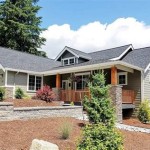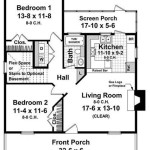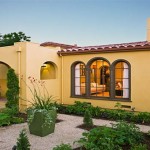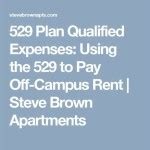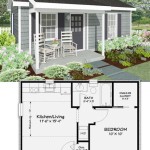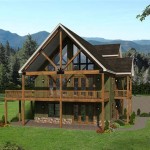Simple A-Frame Cabin Plans: A Comprehensive Guide
A-frame cabins represent a distinctive and enduring architectural style, characterized by their steep, triangular roof that typically extends to ground level, forming the walls. This design offers several advantages, including simplified construction, effective shedding of snow and rain, and a generally smaller footprint, making them ideal for remote or challenging locations. This article provides a comprehensive overview of simple A-frame cabin plans, examining key considerations, design variations, construction aspects, and relevant resources for prospective builders.
Understanding the A-Frame Design
The defining feature of an A-frame cabin is its triangular structure. This inherent shape provides significant structural strength, allowing for large, open interior spaces without the need for extensive internal support. The steep roof slopes effectively manage precipitation, preventing snow accumulation and facilitating rapid water runoff, which is particularly beneficial in regions with harsh weather conditions. The simplicity of the design translates to potentially lower construction costs and reduced building time compared to more complex architectural styles.
Variations in A-frame designs exist, primarily in the roof pitch, the presence of a foundation (whether raised or slab-on-grade), and the integration of dormers or additional structural elements. The roof pitch, or the angle of the roof relative to the horizontal, influences the interior space and the exterior appearance. A steeper pitch provides more headroom but requires more material. A more shallow pitch, while using less material, may limit usable space inside the cabin. The foundation type will depend on site conditions, local building codes, and the desired level of insulation and protection from the elements.
Internal layouts within an A-frame cabin are typically open-plan, maximizing the use of the available space. Lofts are a common feature, often accessed by ladders or stairs, providing additional sleeping or storage areas. The placement of windows and doors is crucial for natural light and ventilation, and careful consideration should be given to their location to optimize energy efficiency and minimize heat loss or gain.
Key Considerations Before Construction
Before embarking on the construction of an A-frame cabin, several key factors must be carefully considered. The first and foremost is the selection of a suitable building site. This involves evaluating factors such as accessibility, soil conditions, drainage, access to utilities (water, electricity, and septic systems), and compliance with local zoning regulations. A thorough site survey is essential to identify any potential challenges, such as unstable soil, steep slopes, or the presence of protected species or habitats.
Acquiring the necessary permits and approvals from local authorities is a critical step. Building codes vary significantly from region to region, and compliance is mandatory to ensure the safety and structural integrity of the cabin. This may involve submitting building plans, obtaining inspections at various stages of construction, and adhering to specific requirements for insulation, fire safety, and accessibility. Failure to comply with building codes can result in fines, delays, and even the requirement to dismantle the structure.
Budgeting is another indispensable aspect of the planning process. Developing a detailed budget that accounts for all anticipated costs, including materials, labor, permits, equipment rental, and contingency funds, is crucial for preventing cost overruns and ensuring the project remains financially viable. Obtaining multiple quotes from contractors and suppliers is recommended to ensure competitive pricing and make informed decisions. It's also prudent to factor in potential unforeseen expenses, such as unexpected site conditions or material price increases.
Exploring Simple A-Frame Cabin Plan Options
Numerous A-frame cabin plans are available, ranging from basic, minimalist designs to more elaborate layouts with multiple stories and integrated amenities. The choice of plan will depend on individual needs, preferences, budget, and the intended use of the cabin. Simple A-frame plans typically feature a single open living space on the ground floor, with a loft area above. These plans are often designed for weekend getaways or recreational use and prioritize affordability and ease of construction.
More complex A-frame plans may incorporate features such as separate bedrooms, bathrooms, kitchens, and living areas. These plans are suitable for year-round living or for accommodating larger groups. They may also include energy-efficient features such as solar panels, rainwater harvesting systems, and high-performance insulation. The integration of these features can significantly reduce the environmental impact of the cabin and lower operating costs.
Many online resources and design firms offer A-frame cabin plans, both free and for purchase. It's important to carefully review the plans to ensure they meet specific needs and comply with local building codes. Customizing a pre-existing plan can be a cost-effective way to tailor it to individual preferences and site conditions. Working with an architect or designer can provide valuable expertise in optimizing the design and ensuring structural integrity.
Essential Elements of A-Frame Cabin Construction
The construction of an A-frame cabin generally involves several key stages. The first stage is preparing the building site. This includes clearing vegetation, leveling the ground, and establishing a solid foundation. The foundation can be either a slab-on-grade concrete pad, a raised pier foundation, or a full basement, depending on the site conditions and the desired level of insulation and protection from moisture.
The framing process involves constructing the A-frame structure itself. This typically involves assembling a series of triangular frames, which are then connected to form the roof and walls. The framing is often done using dimensional lumber, such as 2x6 or 2x8 studs, and is secured with nails, screws, and metal connectors. The accuracy and precision of the framing are critical to ensure the structural integrity of the cabin.
Insulation is essential for maintaining a comfortable interior temperature and reducing energy consumption. Various insulation materials can be used, including fiberglass batts, spray foam, and rigid foam boards. The choice of insulation material will depend on factors such as cost, R-value (thermal resistance), and ease of installation. Proper sealing of all gaps and cracks is crucial to prevent air leaks and maximize the effectiveness of the insulation.
Exterior cladding protects the cabin from the elements and provides aesthetic appeal. Common cladding materials include wood siding, metal siding, and shingles. The choice of cladding material will depend on factors such as cost, durability, and maintenance requirements. The roof is typically covered with asphalt shingles, metal roofing, or wood shakes, depending on the climate and the desired aesthetic.
Interior finishing involves installing drywall, flooring, trim, and fixtures. The interior design can be tailored to individual preferences and can range from rustic and minimalist to modern and luxurious. Careful attention to detail during the finishing process can significantly enhance the comfort and functionality of the cabin.
Materials and Tools for A-Frame Construction
The selection of appropriate materials is crucial for the success of any construction project. For an A-frame cabin, pressure-treated lumber is often used for the foundation and framing to resist moisture and decay. The choice of lumber species for the structural members depends on availability, cost, and desired aesthetic. Douglas fir, pine, and cedar are commonly used choices.
Sheathing materials, such as plywood or oriented strand board (OSB), are used to cover the framing and provide a solid surface for the exterior cladding. The thickness and grade of the sheathing will depend on the structural requirements and local building codes. Exterior cladding materials range from traditional wood siding to more modern options like metal and engineered wood products. The selection should consider factors like resistance to weather, insects, and fire, as well as maintenance requirements.
Insulation materials play a critical role in the energy efficiency of the cabin. Fiberglass batts are a common and affordable option, while spray foam provides superior insulation and air sealing. Rigid foam boards can be used for insulating the foundation and exterior walls. The choice of insulation should be based on the climate, budget, and desired level of energy performance. Roofing materials are essential to protect the A-frame from the elements and maintain structural integrity. Shingles, metal roofing, or even wood shakes can be used.
A variety of tools are necessary for constructing an A-frame cabin. These include power tools such as circular saws, drills, impact drivers, and sanders. Hand tools such as hammers, levels, squares, and tape measures are also essential. Safety equipment, such as safety glasses, gloves, and hard hats, should always be worn when working on a construction site. Specialized tools, such as scaffolding or lifts, may be required for working at heights.
Sustainable Practices in A-Frame Cabin Construction
Sustainability is an increasingly important consideration in modern construction. Incorporating sustainable practices into the construction of an A-frame cabin can reduce its environmental impact and lower its operating costs. One approach is to prioritize the use of locally sourced and sustainable materials. This reduces the carbon footprint associated with transportation and supports local economies. Using reclaimed or recycled materials, such as salvaged lumber or recycled metal roofing, can further reduce the environmental impact.
Energy efficiency is another key aspect of sustainable construction. Installing high-performance insulation, energy-efficient windows and doors, and a properly sized heating and cooling system can significantly reduce energy consumption. Utilizing passive solar design principles, such as orienting the cabin to maximize solar gain in the winter and minimize it in the summer, can further reduce energy costs.
Water conservation is also an important consideration. Installing low-flow fixtures and appliances can reduce water consumption. Rainwater harvesting systems can be used to collect rainwater for irrigation or non-potable uses. Greywater recycling systems can be used to reuse wastewater from showers and sinks for flushing toilets.
Waste management is a crucial aspect of sustainable construction. Minimizing waste during the construction process can reduce the amount of material sent to landfills. Recycling construction waste, such as lumber, drywall, and metal, can further reduce the environmental impact. Composting organic waste, such as food scraps and yard waste, can reduce the amount of waste sent to landfills.
Maintaining an A-Frame Cabin
Proper maintenance is essential for preserving the longevity and value of an A-frame cabin. Regular inspections should be conducted to identify any potential problems, such as leaks, insect infestations, or structural damage. Addressing these problems promptly can prevent them from escalating into more serious and costly issues.
The exterior of the cabin should be cleaned regularly to remove dirt, debris, and mildew. Wood siding should be treated with a sealant or stain every few years to protect it from the elements. The roof should be inspected for damaged or missing shingles and repaired as needed. Gutters and downspouts should be cleaned regularly to prevent clogs and ensure proper drainage.
The interior of the cabin should be kept clean and well-ventilated. Regular cleaning can prevent the buildup of dust, dirt, and allergens. Proper ventilation can prevent moisture buildup and reduce the risk of mold growth. Appliances and fixtures should be maintained according to the manufacturer's instructions.
Winterizing the cabin is essential for preventing damage from freezing temperatures. Pipes should be drained to prevent them from bursting. The heating system should be inspected and serviced. The roof should be cleared of snow to prevent excessive weight buildup. The cabin should be secured against theft or vandalism.

How To Build This A Frame Cabin That Will Pay For Itself Hipcamp Journal

A Frame House Plans Free Cabin Floor

Tiny A Frame Cabin Diy Plans 12 X 18 Home Blueprint

24 X A Frame Cabin Plan Project Small House

Tiny A Frame Cabin Plans By Solarcabin 16 Steps Instructables

How To Build An Diy A Frame Cabin For Under 10k Field Mag

A Frame House Plans Everything You Need To Know Field Mag

24 36 A Frame Cabin Shed Plans Blueprints For Designing Big Floor House

14 X14 Tiny A Frame Cabin Plans By Lamar Alexander

How To Build This A Frame Cabin That Will Pay For Itself Hipcamp Journal

